Brazil
Photos
13 Photos
Per Page:
Filter Categories
All
Filters
Brazil's earliest national capitals - Salvador and Rio de Janeiro - were coastal cities. Although these sites were well suited to trade, they were vulnerable to maritime raids. In the late 19th century, Brazilian leaders resolved to move the capital city inland. Large-scale construction of a new site, however, did not begin until the 1950s. On 22 April 1960, the nearly complete capital city of Brasilia opened. The city's pioneer status in urban planning prompted UNESCO to name Brasilia a World Heritage Site in 1987. This natural-color satellite image of Brasilia taken during the summer dry season - with just 3 cm (1 in) of rain - displays earth tones characteristic of non-irrigated dormant vegetation. Buildings and roads appear off-white, gray, or pale tan. The city, whose overall design has been compared to a bird or an airplane, among other shapes, sits west of an artificial lake, Lago Paranoa. The branching lake sends its tendrils deep into the city, helping separate the downtown area (image center) from residential areas to the north and southeast. Northwest of the city lies Brasilia National Park, protecting a large expanse of cerrado, the tropical savanna ecosystem natural to the area. Image courtesy of NASA.

Whether seen at night or during the day, the capital city of Brazil is unmistakable from orbit. Brasilia is located on a plateau - the Planalto Central - in the west-central part of the country, and is widely considered to be one of the best examples of 20th century urban planning in the world. One of its most distinctive design features - as seen from above - suggests a bird, butterfly, or airplane traveling along a northwest-southeast direction, and is made dramatically visible by city light patterns (image center right, between Lake Paranoa and the airport).
Following the establishment of Brasilia in the early 1960s, informal settlements began to form around the original planned city. Ceilandia was one such settlement. In 1970, Ceilandia was formalized by the government and is now a satellite city of Brasilia with its own distinct urban identity. The developed areas of Brasilia and its satellites are clearly outlined by street grids and highway lights in this photograph taken from the International Space Station. The large unlit region to the upper right is the Brasilia National Park. Image courtesy of NASA.
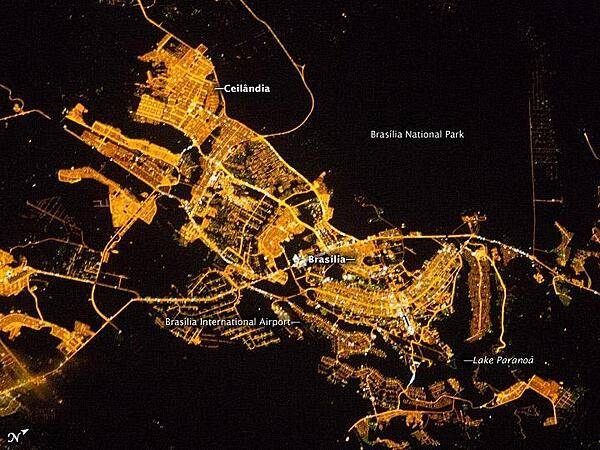
This photograph shows a section of the Negro River in Jau National Park, Amazonas state. Fed by multiple waterways, the Negro River is the Amazon's largest tributary. The mosaic of partially-submerged islands visible in the channel of this enhanced satellite image disappears when rainy season downpours raise the water level. Jau National Park is South America's largest forest reserve, covering 23,000 sq km (8,900 sq mi); it is listed with three other protected areas as a UNESCO World Heritage Site. Image courtesy of USGS.
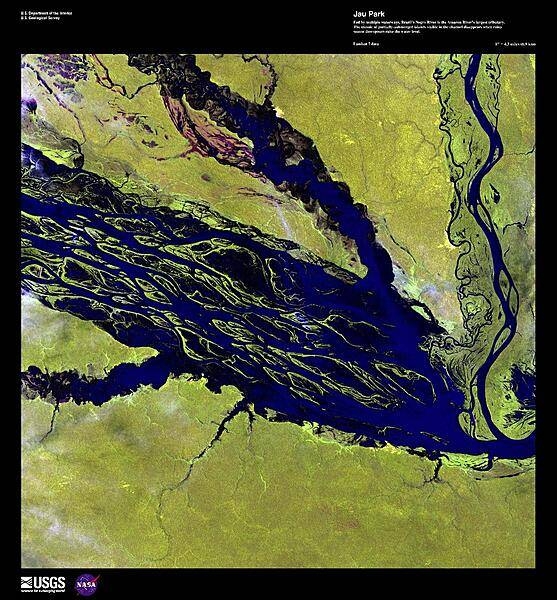
A panoramic view of Iguazu Falls along the Brazil-Argentina border. The falls are shared between Iguazú National Park (Argentina) and Iguaçu National Park (Brazil). The two parks were designated UNESCO World Heritage Sites in 1984 and 1986, respectively. The entire waterfall system consists of some 275 falls that flow over several basaltic layers over an 80 m height and along 2.7 km (1.7 mi) of the Iguazu River. The many cascades producing vast sprays of water to create one of the most spectacular waterfalls in the world. The falls are easily reached from either side of the Argentine–Brazilian border.
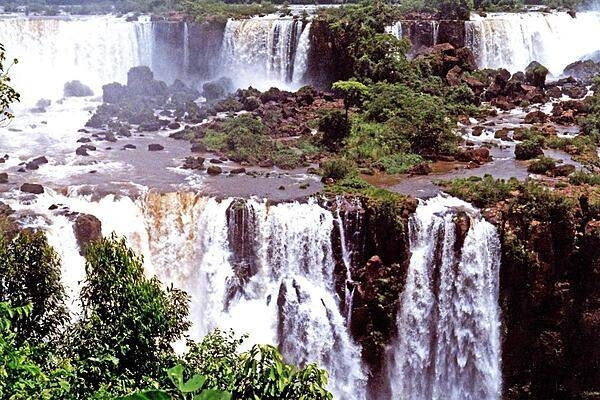
Another view of Iguazu Falls on the Brazil-Argentina border.

The majestic Iguazu Falls on the Argentine-Brazil border. The falls are part of a nearly virgin jungle ecosystem surrounded by national parks on both sides of the cascades. The Iguazu River begins in Parana state of Brazil, then crosses a 1,200-km (750 mi) plateau before reaching a series of faults forming the falls.

Trinidade Beach at Paraty, Rio de Janeiro state.
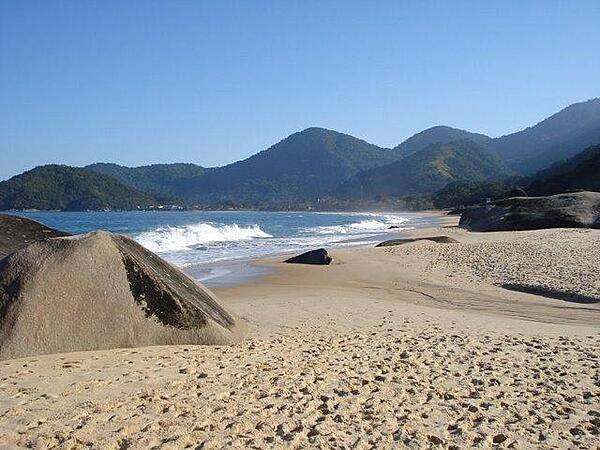
Trinidade Beach at Paraty, Rio de Janeiro state.

O Cristo Redentor (Christ the Redeemer) statue overlooking Rio de Janeiro. The monument, which is 38 m (120 ft) tall and stands on Corcovado Mountain, is made of reinforced concrete and soapstone. Constructed over a period of nine years, the sculpture was dedicated in 1931. In 2007, it was named one of the New Seven Wonders of the World.
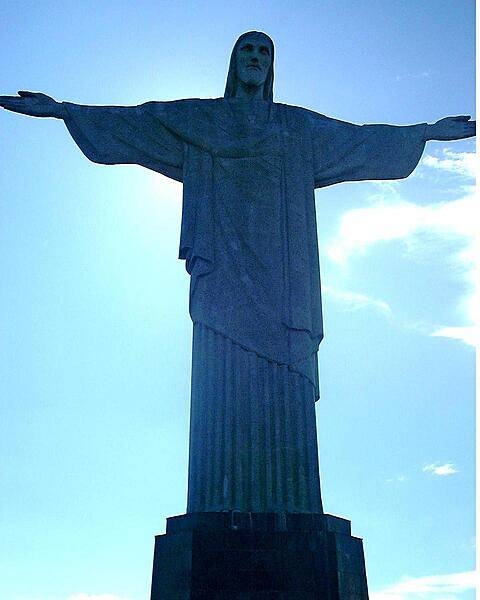
Close-up of the O Cristo Redentor (Christ the Redeemer) statue overlooking Rio de Janeiro.
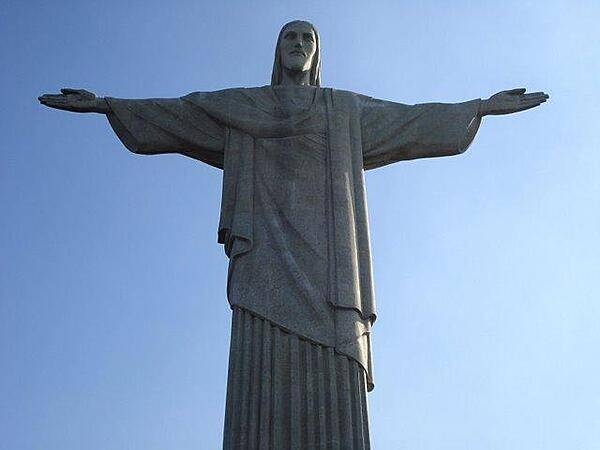
Aquamarine, often called the treasure of mermaids, is mostly found and mined in Brazil, as well as countries that fall along the Mozambique geological belt in Africa. The biggest aquamarine ever found was in Brazil in 1910, it weighed 110 kg ( 243 lb) and was cut into smaller faceted stones for jewelry. The “Dom Pedro,” the largest single piece of cut-gem aquamarine in the world, was found in a Brazilian pegmatite mine in the late 1980s and is named after Brazil’s first two emperors (both named Pedro). The original crystal weighed roughly 45 kg (100 lb), but during excavation it shattered into three pieces. The largest section, approximately 27 kg (60 lb), was sculpted into an obelisk shape. The obelisk, 35.5 cm (14 in) tall, measuring 10 cm (4 in) across the base and weighing 10,363 carats or 2.1 kg (4.6 lbs), is part of the permanent collection of Smithsonian National Museum of Natural History in Washington, DC. Photo courtesy of the Smithsonian/ Greg Polley.
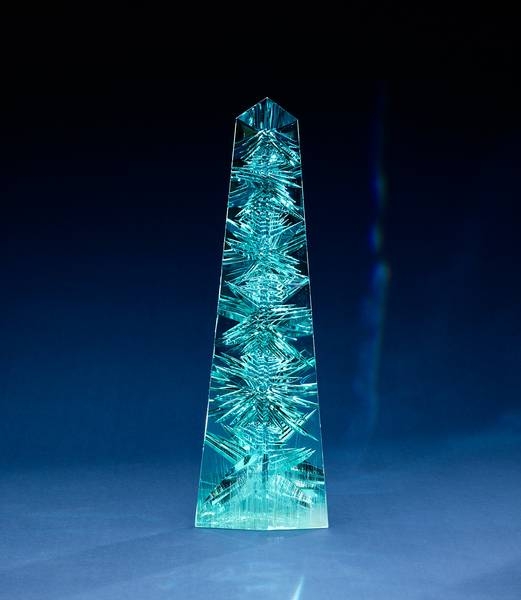
Rocas Atoll, here viewed from the International Space Station, is the only atoll in the South Atlantic Ocean. Part of the Fernando de Noronha archipelago, it is located approximately 260 km (160 mi) off the northeastern coast of Brazil. The image clearly captures the defining boundary between the outer algal ridge, the open ocean, and the sandy bottom closer to the atoll’s center. In 1978, Rocas Atoll was named a national biological reserve due to its large populations of migratory and resident seabirds. As the first marine reserve to be established in Brazil, the remote, uninhabited atoll is used strictly for scientific research. An atoll is usually a circular or oval-shaped reef structure with a lagoon in the center. These structures typically form around a volcanic island that has subsided while the coral continues to grow upward. Photo courtesy of NASA.
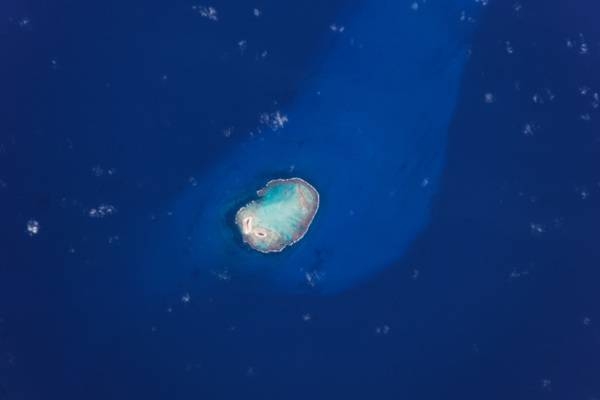
Page 01 of 02